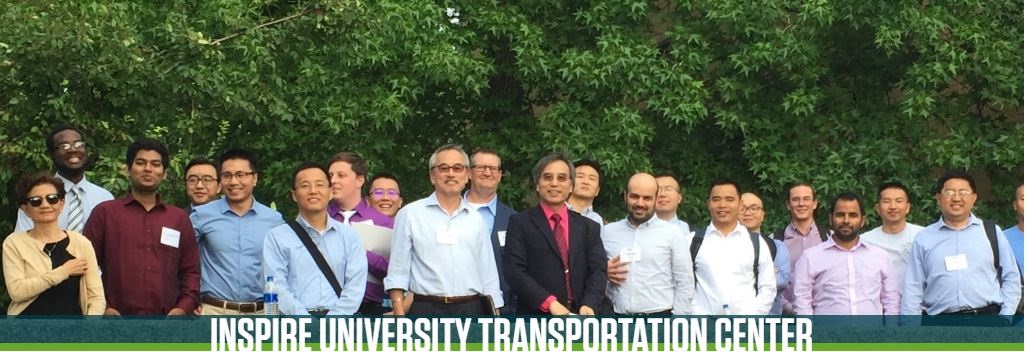Description
Mobile manipulating UAVs have great potential for bridge inspection and maintenance. Since 2002, the PI has developed UAVs that could fly through in-and-around buildings and tunnels. Collision avoidance in such cluttered near-Earth environments has been a key challenge. The advent of light-weight, computationally powerful cameras led to breakthroughs in SLAM even though SLAM-based autonomous aerial navigation around bridges remains an unsolved problem.
In 2007, the PI integrated a mobile manipulation function into UAVs, greatly extending the capabilities of UAVs from passive survey of environments with cameras to active interaction with environments using limbs. Mobile-manipulating UAVs have since been demonstrated to successfully turn valves, install sensors, open doors, and drag ropes. Their research and development face several challenges. First, limbs add weight to aircraft. Second, rotorcraft, like a quadcopter, is an under-actuated system whose stability can be easily affected by limb motions. Third, when performing a task like turning a valve, limbs demand compensation for torque-force interactions. Thus, even if battery technologies afford the additional payload of limbs, current knowledge for manipulation with under-actuated systems remains sparse.
This project aims to develop and prototype a mobile-manipulating UAV for bridge maintenance and disaster cleanup through further study on SLAM technology for robust navigation, impedance controllers to ensure UAV’s stability with limb motion, and coordinated and cooperative motions of multiple limbs to perform simple tasks like bearings cleaning and crack sealing in concrete bridges. Two strategies will be explored for bridge maintenance: (a) A UAV brings and uses a can of compressed air for bridge cleaning, and (2) Two UAVs airlift, position, and operate hoses from ground, and clean bridges with air or water. The latter can be potentially implemented by including a station-keeping, lighter-than-air UAV like blimp that can airlift a hose and remain airborne for extended periods. The mobile-limbed UAVs can then pull-and-drag the hose into areas that need to be cleaned. The blimp-based approach is attractive because it is easier for a UAV to drop hose lengths rather than pull the hose up in air.
Location
Rolla, Missouri
Presentation Date
14 Aug 2018, 1:00 pm - 1:30 pm
Meeting Name
INSPIRE-UTC 2018 Annual Meeting
Department(s)
Civil, Architectural and Environmental Engineering
Document Type
Presentation
Document Version
Final Version
File Type
text
Language(s)
English
Included in
Mobile-manipulating UAVs for Sensor Installation, Bridge Inspection and Maintenance
Rolla, Missouri
Mobile manipulating UAVs have great potential for bridge inspection and maintenance. Since 2002, the PI has developed UAVs that could fly through in-and-around buildings and tunnels. Collision avoidance in such cluttered near-Earth environments has been a key challenge. The advent of light-weight, computationally powerful cameras led to breakthroughs in SLAM even though SLAM-based autonomous aerial navigation around bridges remains an unsolved problem.
In 2007, the PI integrated a mobile manipulation function into UAVs, greatly extending the capabilities of UAVs from passive survey of environments with cameras to active interaction with environments using limbs. Mobile-manipulating UAVs have since been demonstrated to successfully turn valves, install sensors, open doors, and drag ropes. Their research and development face several challenges. First, limbs add weight to aircraft. Second, rotorcraft, like a quadcopter, is an under-actuated system whose stability can be easily affected by limb motions. Third, when performing a task like turning a valve, limbs demand compensation for torque-force interactions. Thus, even if battery technologies afford the additional payload of limbs, current knowledge for manipulation with under-actuated systems remains sparse.
This project aims to develop and prototype a mobile-manipulating UAV for bridge maintenance and disaster cleanup through further study on SLAM technology for robust navigation, impedance controllers to ensure UAV’s stability with limb motion, and coordinated and cooperative motions of multiple limbs to perform simple tasks like bearings cleaning and crack sealing in concrete bridges. Two strategies will be explored for bridge maintenance: (a) A UAV brings and uses a can of compressed air for bridge cleaning, and (2) Two UAVs airlift, position, and operate hoses from ground, and clean bridges with air or water. The latter can be potentially implemented by including a station-keeping, lighter-than-air UAV like blimp that can airlift a hose and remain airborne for extended periods. The mobile-limbed UAVs can then pull-and-drag the hose into areas that need to be cleaned. The blimp-based approach is attractive because it is easier for a UAV to drop hose lengths rather than pull the hose up in air.



